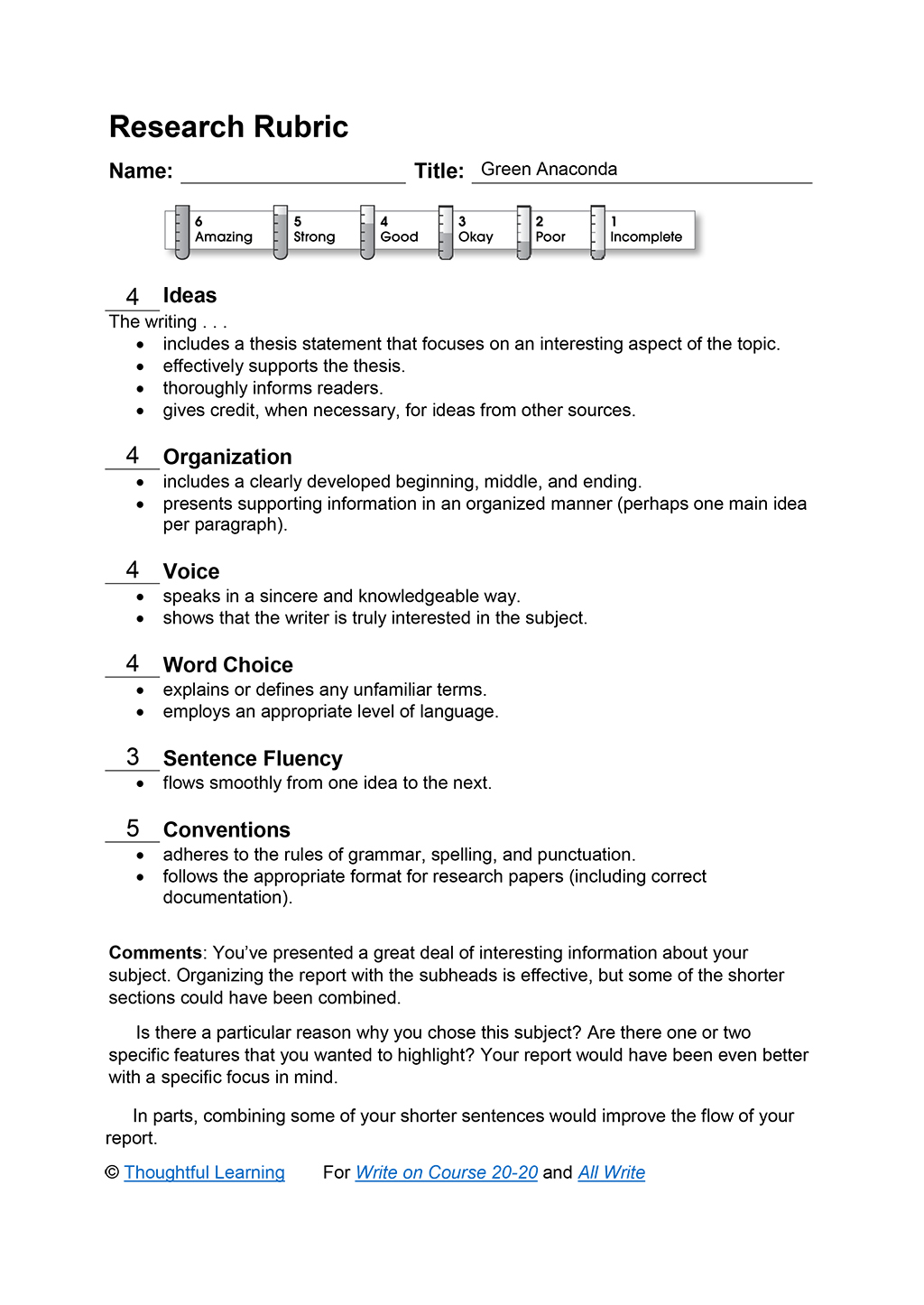Student Model
Green Anaconda
Many people are afraid of snakes. If you are one of these people, then you definitely wouldn’t want to meet an anaconda, especially a green anaconda. Here’s why: the largest green anaconda is over 75 feet long! That’s longer than three train cars. The common name for this animal is “Green Anaconda.” The scientific name is “Eunectes Murinus.”
The Green Anaconda’s Relatives
The relatives of the green anaconda are the anaconda, the giant anaconda, all boas, and all pythons. All of these snakes are part of the “Boidae” family.
The Green Anaconda’s Habitat
This species’ habitat is northern South America through the main Amazon region. These are wet forest regions, which are favorable to snakes in the “Boidae” family.
Anatomy of the Green Anaconda
Its body has small, very basic legs. The vertebrae in its backbone sometimes number in the hundreds. The long body enables the snake to move by locomotion. The scales of a snake are thickened areas of the outer layers of the skin. When the living part of the skin grows, dead cells reach the top to form the tough keratinized scales. In between the scales are folds of skin that are elastic. This skin helps the snake to swallow oversized objects. Snakes shed their skin more than once in a year. It’s a nocturnal snake, which means it sleeps during the day and hunts at night. It is cold-blooded, fat, and has a very slow digestive system. It is 35 to 65 feet long when fully grown. In fact, all snakes in the “boa” family have small legs.
The Life of the Green Anaconda
The snake is 10 to 12 years old when it dies. It breeds 20 to 30 live babies at a time. Many young anacondas do not reach maturity. This is because of the harsh environment and predators. Most of its life is spent alone, coiled around trees overlooking water or looking for prey. It hunts in well-defined territories, killing its prey by squeezing its victim tighter each time it breathes until it suffocates its victim. After its victim is dead, it swallows it whole. The green anaconda has two main predators: humans and poachers. Large cats are predators to the babies.
The Foods the Green Anaconda Eats
The green anacondas feed on animals as small as birds and rodents, or on animals as large as panthers and wild boars. When they swallow, the snake stretches its jaws apart. Then the snake’s throat muscles and body motion help the food go down. It takes about an hour for the snake to eat a large object. They do not chew their food. They only eat about four good nourishing meals a year.
In conclusion, the green anaconda is a very interesting creature with hundreds of vertebrates and elastic folds of skin that allow the snake to swallow oversized objects. It spends most of its time looking for prey. Take my advice: watch out for this giant snake if you’re in the Amazon region.
Source page
Source 1: Wildlife of the World, Vol. 1 (A-Ba)
Source 2: U.S. News, April 2016
Source 3: Academic American Encyclopedia, Vol 1, 2016
Source 4: Colliers Encyclopedia, Vol 2, 2016
Source 5: Smithsonian, Sept. 2016

Rubric


Green Anaconda by Thoughtful Learning is licensed under a Creative Commons Attribution-NonCommercial-ShareAlike 4.0 International License.
Based on a work at k12.thoughtfullearning.com/assessmentmodels/green-anaconda.